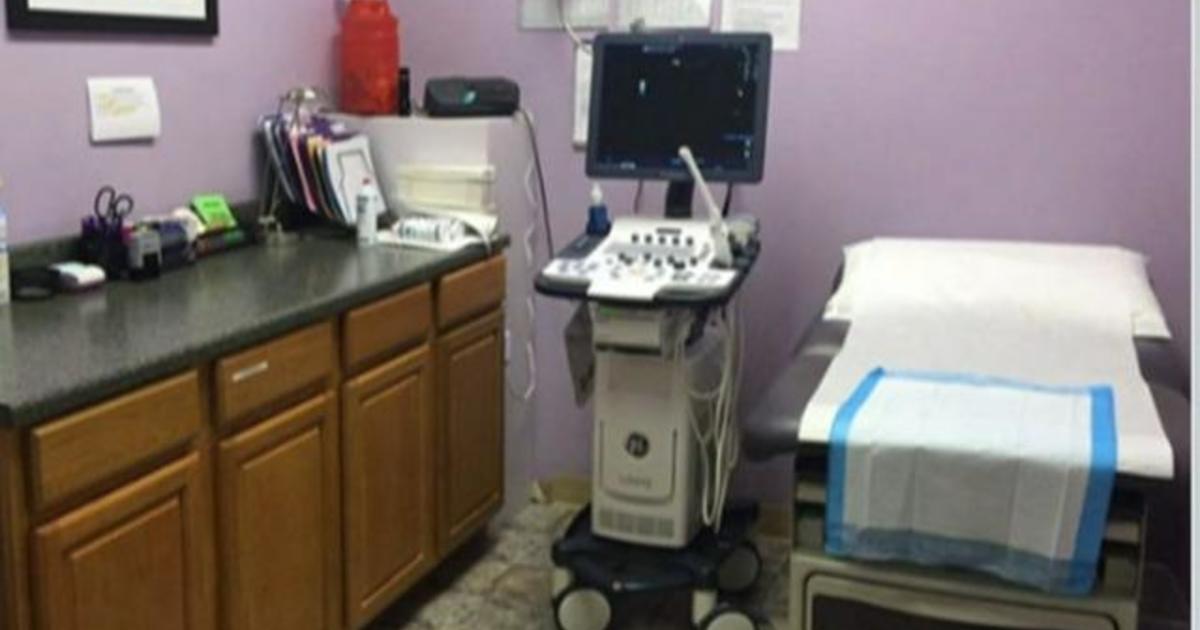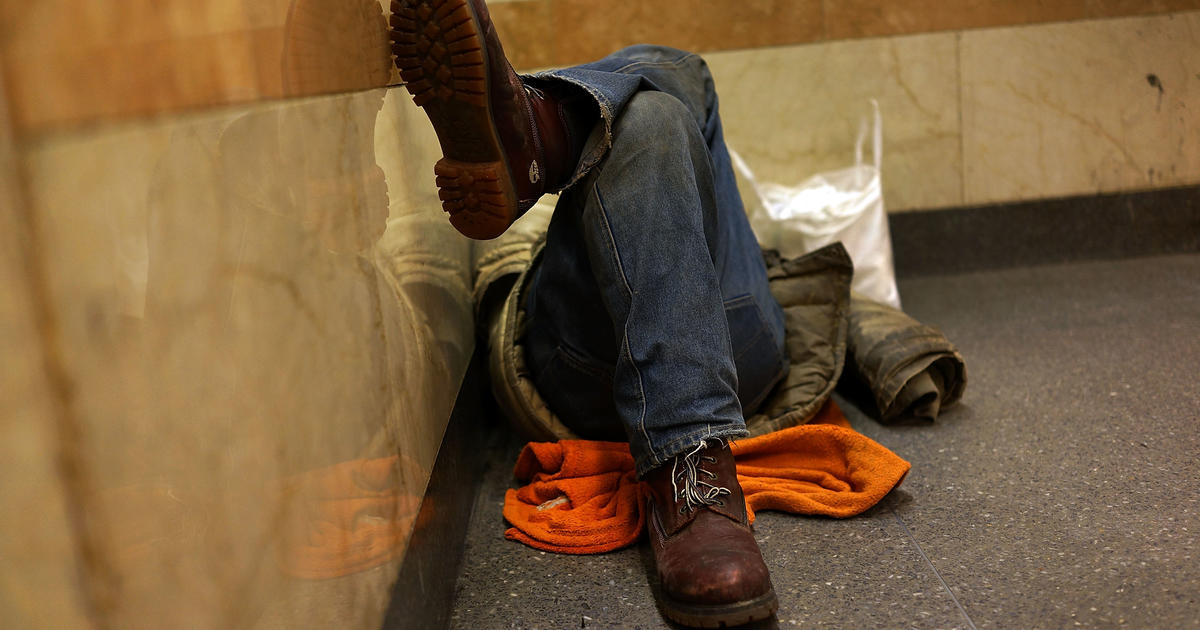Cave Diving: Behind The Scenes
MIAMI (CBSMiami) -- Over the years we have seen our share of crazy situations including shark frenzies, diving with the third most dangerous shark in the world, handling fish that could send me to the hospital. They were terrifying majestic moments but won't come close to the dangerous beauty we faced inside Florida's caves. Since December I've been exploring the world of Florida's caves. We're not talking about dry caves that you could find, say a bat...But caves full of water. They can be found from Central Florida on North and people dive them.
AN INTRODUCTION TO THE DANGER IN CAVES
They are as spectacular as they are dangerous. I learned it first hand with cave diving instructor Edd Sorenson. It was the last day of my cavern training class. Sorenson and I were wearing a full face mask so we could talk to each other. "You ready?" he asked me. I excited shouted back "Let's do it." Everything seemed fine. But just when you think everything is going perfectly in seconds it all changes. Sorenson came over the radio "It's complete silt behind you." I look back. There is dark cloud of silt behind me. I can no longer see the entrance to the cave. Sorenson shouts something about my fins. I don't hear it though. I'm still trying to take in what is happening. A mistake I have made swimming is now kicking up muck in the entire cave I just entered. "You have to be calm. You have to be collected here." I tell myself out loud. It's a silt out. I can't see anything, not even my hand in front of my face.
As the cloud of silt moves around me Sorenson reminds me I need to take action quickly. "I need you to get on the line. Ok it" I reach out for the gold line to my left. It's up to this tiny piece of string and hours of training with it to get me out of this mess. At this point I'm not wondering how I got here. That question was asked days earlier. Within 50 seconds of starting cavern training class I was already concerned. Sorenson slammed the our class book on the table. "It's not a matter of if problems occur. It's a matter of when problems occur." he announced. I had heard he was an accomplished cave diving trainer and rescuer. I has also heard he was tough... because you have to be. He quickly confirmed that. "I don't sugarcoat anything. In here we screw up. We die."
OUR CAVE DIVING TRAINING
Over three days Sorenson would drill us. Modifying our swimming technique and teaching us skills to escape disaster. He ran a line of string and pointed to it. "You only have a certain amount of time to get out. Once you have this, don't you let go." As the classes moved outdoors it became difficult to focus on the task at hand as we started to freeze. It just so happened we are shooting in Northern Florida on the coldest days of the winter. Oddly enough it was colder outside the spring water. By day two I was no longer going for style points. I strapped on the wetsuit I wear in South Florida's waters, along with booties and head cover Sorenson lent me. "I'm going to keep the warmth inside. It's going to make a huge difference." I told myself. Meanwhile the rest of our crew, accomplished cave divers, had dry suits on. They might be a little cold but at least they were dry.
I was eager to get underwater to see what all the fuss of cave diving was about. As I saw my first glimpse of the cavern I quickly realized cave diving is nothing like diving in the ocean. We dropped down and started doing drills. 45 minutes later we surface. Sorenson rubs his face searching for the words to convey what had just occurred. "All in all that was horrible." he finally says. On land our newfound skills were spot on. From modifying the swim technique, to fighting currents while running lines and tying things off - underwater everything was more challenging.
PUTTING OUR PHOTOGRAPHER/EDITOR IN THE CAVE
Early on we decided our topside photographer Kyle Hall would take the course as well with me. When it came time to edit our series I wanted Kyle to have a true understanding of what it was like inside the cave. It meant he took the abuse as well though. When diving in the ocean divers typically go in teams to keep an eye on each other. Cave diving still uses a partner rule but it's not exactly the same. At one point Kyle and I were using hand signals to communicate how much air we had left. Sorenson came over the radio. "Horizontal! Let's go. We are wasting time here!" he shouted. It turns out Sorenson wanted us to use our lights rather than hand signals to communicate. With our bodies horizontal there was no looking ahead. Instead we were to look down and utilize the lights. In cave diving everything involves light. It lights the way. It communicates. It signals distress. In one drill Sorenson gave me the signal to wave my light rapidly. I'm signaling Kyle I'm out of air. But Kyle didn't catch it. Finally Sorenson radios to Kyle "What are you doing?" He turns around and see my flashing light. 25 seconds, a lifetime underwater, had gone by before he noticed.
To make the scenario even worse Sorenson then decided to make it even more challenging. He slips black panties over our mask. He tells us to find out way out. We immediately grab onto the line and assume a buddy exit position. As we slowly swim up the line we come across another reel of line tied onto our string. Kyle has a choice to make. Which reel should he take? One leads out for sure because we ran it. The other line though? We have no idea where it goes. Kyle picks the wrong one. Sorenson radios "Is that your reel?" to Kyle The blind are now literally leading the blind. Kyle keeps going through with the wrong reel. Sorenson again comes over the radio "He'll figure out that's not his reel that he's holding onto." Kyle stops in his tracks and begins to back up. He feels his way to the other reel and then moves out of the cave safely.
CAPTURING CAVE UNDERWATER
Documenting our journey underwater is David and Becky Schott - A husband and wife team that travel the world cave diving. When asked about what that's like Becky smiles and says "Hey I get to work with my husband. There is nothing better than that." "Some people would say they would kill themselves if they had to work with their husbands actually." I respond. "It's not always easy but I'd rather be with him and working with him than off in these foreign countries doing what we do in dangerous environments." she explains.
Dangerous is an understatement. Once training was complete we moved on to Ocala (near Central Florida) to meet with cave explorers. "The cave suddenly goes from this very beautiful place to almost this entity that is trying to devour you." Cave explorer Brett Hemphill told us. It was clear it takes a certain kind of person, you might say crazy enough, to do it. Hemphill and his colleagues consider themselves underwater astronauts of sorts. From the dry suits to the gear they are using it certainly looks like it. Matt Vinzant, a cave explorer tried to describe it. "It's one of the coolest feelings ever. In the current world we live in, to go somewhere no one has ever been. More people have been on the moon then where we are going today. Which is a pretty neat thing." The team showed us how they do that. They travel to remote places, jump in to secret spots crawling with alligators, and cram through holes they could barely fit their head in.
As I watch them I wonder how dangerous this really is. "How long have you been doing this?" I ask Hemphill. He smiles. "Almost 24 years." "In your 24 years have you had any close calls?" I ask. He laughs...nervously. "I have had a lot of close calls." I shoot back at him "Do you ever think maybe you should cut it here?" He lets out another nervous laugh. "All the time." he says. There is one thing that lures Brett and all the other cave divers in. It's what lies around the corner. The great unknown. The attraction can be deadly - As a father and son sadly learned on Christmas Day in a place called Eagles Nest. When we started work on the cave diving series in early December we had no plans to visit Eagles Nest. I had never even heard of it. We thought caves would be a fun look at a really fascinating sport. When the incident happened in Eagles Nest on Christmas Day the perspective changed. We now knew we had to do the story.
DIVING MOUNT EVEREST
Just North of Tampa the deep cave is considered the Mount Everest of cave diving. For our series we explored what went wrong, including a trip inside the very cave the father and son died in. With a week of training and practice Eagles Nest was the very last dive we would do for our series. With a team of experts around us things would still go wrong. Just before we go down I look over at Kyle. "We talked a lot about this, planned a lot. So I'm not really scared about it." I tell him. As we dropped down Hemphill swam next to me. Over the radio he tells me "Dave below is a sandhill at 130 feet. And in every direction, every direction you go it drops off 200 feet." I look around at the blackness trying to see the sandhill he's talking about. "You can't see anything below us." I radio.
The vast darkness is consuming. I have no idea where I am in space. Ascending? Sinking? All the sudden I hear someone screaming. My safety team is yelling, trying to warn me. Unknowingly I dropped below our safety plan… moving past 100 feet deep. David Schott, who's serving as a safety diver for us on this dive, grabs my tank, launching me back up. For a brief second something comes over me. A dizziness - but euphoric. I come out of it just as fast as it came on. When I surface I wonder in that one moment "Is this what narcosis feels like?" Narcosis sometimes happens to divers when they make ascend or decend too quickly. It's often described as feeling drunk. In bad cases of narcosis divers can actually kill themselves because they are so unresponsive to their environment or situation. I don't think it was narcosis that I experienced. That said the incident put in my mind that father and son. I still wonder to this day what that father and son experienced as they tried to escape the fatal dive. Were they even aware of what was happening. Was it narcosis?
As we wrap up our dive I hear wrestling in the water next to me. Brett's air hose became disconnected from the specialized mask we wear to talk underwater. He quickly switches to his emergency regulator. The whole thing is seamless, without any real panic. Back on the surface he explains how he saw the air hose pop off his full face mask. "When it did I had my breath and I turned it and I was like ok. In seconds I was able to pull the mask off. Find the regulator."
You could call it experience or luck that we all surface. Either way I felt like perhaps we cheated death. As I swim back up the steps to exit the spring I try to describe it to Nick Bourne, our assistant news director who is serving as a field producer and topside photographer for us. "That's incredible in there." I tell him. He has stories of his own to tell as well, including the random person who pulled up on a bike while we were all below. Bourne realized we were in the middle of a state park. There is no cell phone service. If anything happened to him no one would know for a long time. The same could be said for divers who go inside Eagles Nest. I guess that's how it happened for the father and son that day. They were over do for hours before someone went to the site to check on them.
PUTTING MY SKILLS TO THE TEST
During our instruction I learned all the rules in cave diving come from one place: Someone who died. The industry looks back after an accident to see what could have been done differently. Back in our silt out, I have to remember the two rules that will save my life in this moment. Air and string. You need air obviously to breath and you need a string to find your way out. I have plenty of air and a good hold on to the string I tied up outside the cave. I slowly work my way up the line, just as Kyle and I had done days earlier with panty blindfolds on our masks. I follow my line all the way out and surface with a newfound respect for caves.
While I learned enough to live to tell this story, I failed my cavern class. It was the first time I saw Sorenson uncomfortable the entire week. As he tried to explain I didn't understand. I passed the written test. I performed all the skills tests underwater perfectly. How could I fail? After delaying a bit Sorenson finally spits it out. "It's just that you couldn't get those knees up. A lot dust. Those are the kinds of things that could make it someone is notifying your wife." Old habits are hard to kick, literally. Throughout our training I was constantly being told to get my knees up. Years of open water scuba technique was my demise. Instead of swimming horizontal, I swim at an angle to see the horizon. In caves that angle puts my fins kicking up silt. It's a deadly move. Sorenson encourages me to practice. "You can come back, show me you can do it, and I will sign off our your certification." I thank him for the offer.
Remarkably I don't feel anger or even disappointment about failing the class. I feel a sense of relief. The cave diving experience was fascinating but it wasn't for me. The risk versus reward argument doesn't pan out for me. As beautiful as the caves are I'm much more in love with the ocean and sea life. Every time I dive off our gorgeous coastline I see something new. With cave diving I have to pick new places to go or go further into that hole to see something new. When you add the tremendous amount of risk involved in going deeper I'm just not interested.
Kyle, my photographer, on the other hand loved the experience. And he passed the class (he's been a gracious winner). I found it interesting that he passes the class because he had remarkably less diving experience. It worked in his favor because he didn't have the bad swimming technique I had developed over the years. Kyle is hoping to pursue cave diving in the future.
So is cave diving for you? I say take a cavern class and try it out. The worst that can happen is you waste a couple hundred bucks seeing something awesome. Caverns are relatively safer compared to caves. That said I would not venture in one without proper training. As a final thought you should assume nothing. A number of people have died assuming way to much to caves/caverns. Keep that in mind as you seek out adventure.
RELATED CONTENT:



